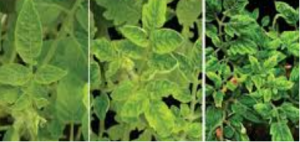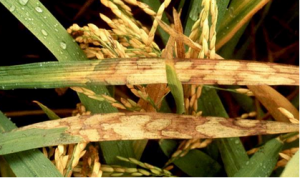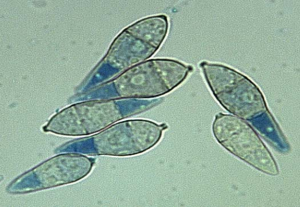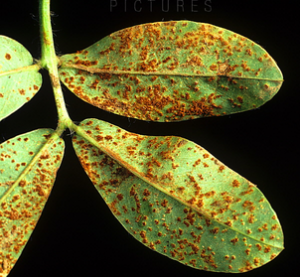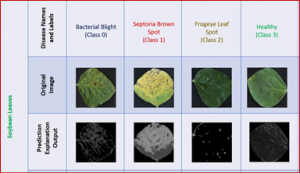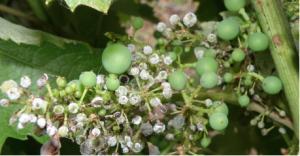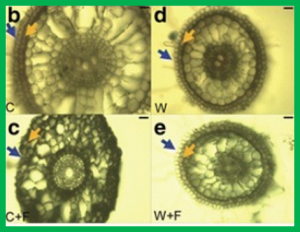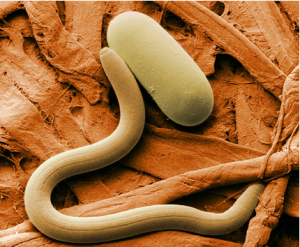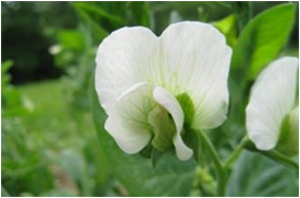Patterns of genomic variation in Chinese maize inbred lines and implications for genetic improvement
The characterization of the genetic relationships, heterotic patterns and breeding history of lines in maize breeding programs allows breeders to efficiently use maize germplasm for line improvement over time. In this study, 269 temperate inbred lines, most of which have been widely used in Chinese maize breeding programs since the 1970s, were genotyped using the Illumina MaizeSNP50 BeadChip, which contains 56,110 single-nucleotide polymorphisms.
Tomato yellow leaf curl disease caused by Tomato yellow leaf curl virus (TYLCV) is a serious threat to tomato (Solanum lycopersicum L.) production worldwide. A Begomovirus resistance gene, Ty-2, was introduced into cultivated tomato from Solanum habrochaites by interspecific crossing. To identify the Ty-2 gene, we performed genetic analysis. Identification of recombinant line 3701 confirmed the occurrence of a chromosome inversion in the Ty-2 region of the resistant haplotype.
Rhizoctonia solani causes rice sheath blight, an important disease affecting the growth of rice (Oryza sativa L.). Attempts to control the disease have met with little success. Based on transcriptional profiling, we previously identified more than 11,947 common differentially expressed genes (TPM > 10) between the rice genotypes TeQing and Lemont. In the current study, we extended these findings by focusing on an analysis of gene co-expression in response to R
The rice blast fungus Magnaporthe oryzae has eight regulators of G-protein signaling (RGS) and RGS-like proteins (MoRgs1 to MoRgs8) that exhibit both distinct and shared regulatory functions in the growth, differentiation, and pathogenicity of the fungus. We found MoRgs7 with a unique RGS-seven transmembrane (7-TM) domain motif is localized to the highly dynamic tubule-vesicular compartments during early appressorium differentiation followed by gradually degradation.
A consensus rust QTL was identified within a 1.25 cM map interval of A03 chromosome in cultivated peanut. This map interval contains a TIR-NB-LRR R gene and four pathogenesis-related genes. Disease resistance in plants is manifested due to the specific interaction between the R gene product and its cognate avirulence gene product (AVR) in the pathogen. Puccinia arachidis Speg. causes rust disease and inflicts economic damages to peanut. Till now, no experimental evidence is known for the action of R gene in peanut for rust resistance.
Plant stress identification based on visual symptoms has predominately remained a manual exercise performed by trained pathologists, primarily due to the occurrence of confounding symptoms. However, the manual rating process is tedious, is time-consuming, and suffers from inter- and intrarater variabilities. Our work resolves such issues via the concept of explainable deep machine learning to automate the process of plant stress identification, classification, and quantification.
Breeding grapevines for downy mildew disease resistance has traditionally relied on qualitative gene resistance, which can be overcome by pathogen evolution. Analyzing two interspecific F1 families, both having ancestry derived from Vitis vinifera and wild North American Vitis species, across 2 years and multiple experiments, we found multiple loci associated with downy mildew sporulation and hypersensitive response in both families using a single phenotype model.
In this study, we showed that M. oryzae could act as a typical root-infecting pathogen in rice, in addition to its common infection of leaves, and wild rice roots were more resistant to M. oryzae than cultivated rice roots. Next, we compared the differential responses of wild and cultivated rice roots to M. oryzae using RNA-sequencing (RNA-seq) to unravel the molecular mechanisms underlying the enhanced resistance of the wild rice roots.
Soybean cultivars, susceptible to the fungus Fusarium virguliforme, which causes sudden death syndrome (SDS), and to the soybean cyst nematode (SCN) (Heterodera glycines), suffer yield losses valued over a billion dollars annually. Both pathogens may occur in the same production fields. Planting of cultivars genetically resistant to both pathogens is considered one of the most effective means to control the two pathogens. The objective of the study was to map quantitative trait loci (QTL) underlying SDS and SCN resistances
Legumes form root nodules to house beneficial nitrogen-fixing rhizobia bacteria. However, nodulation is resource demanding; hence, legumes evolved a systemic signalling mechanism, called Autoregulation of Nodulation (AON), to control nodule numbers. AON begins with the production of CLE peptides in the root, which are predicted to be glycosylated, transported to the shoot, and perceived.


 Curently online :
Curently online :
 Total visitors :
Total visitors :

